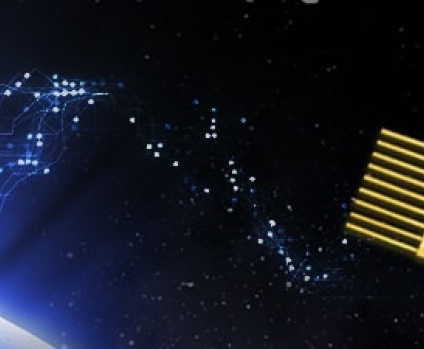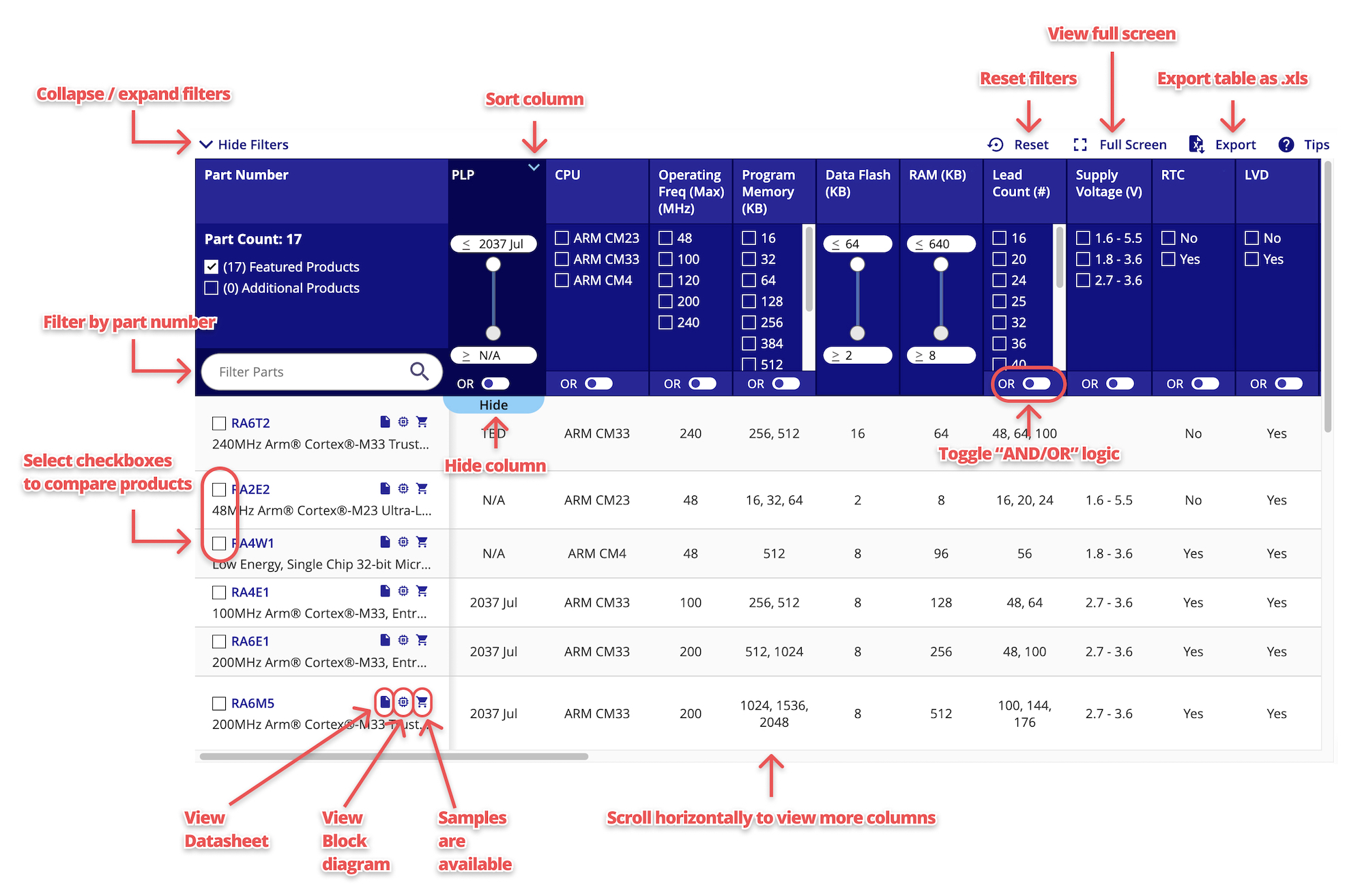
-
-
-
Design Resources
- Design & Development
- Featured Design Tools
- Partners
- Content & Training
-
Support
-
Support Forums
Get help from our expert Renesas technical staff and community.
- Technical Support
- Training & Events
- Quality & Packaging
-
Support Forums
-
Sample & Buy
-
Buy Direct from Renesas
Customers can now choose the convenience of buying direct from Renesas.
- Ordering Resources
-
Buy Direct from Renesas
Rad Hard Voltage References

Renesas offers a broad portfolio of radiation hardened, ultra-low noise, precision voltage references that are ideal for high-end instrumentation, data acquisition and processing applications requiring high DC precision where low noise performance is critical.
Product Selection Table
Reference Output Voltage (V) |
Accuracy Over Temperature (±%) |
Tempco (Box Method) |
Input Voltage Range (V) |
Supply current (mA) |
Output Current Max (A) |
Line Regulation (ppm/V) |
Load Regulation (ppm/mA) |
Output Voltage Noise |
Zener (VZ) Reference Voltage (V) |
Input Current Range |
Change in VZ vs Current (mV) |
High Dose Rate (HDR) (krad (Si)) |
Low Dose Rate (LDR) (krad (Si)) |
DSEE (SEL, SEB, etc.) (MeV*cm2/mg) |
SMD URL |
DLA SMD |
Pkg. Class |
Qualification Level |
Models Available |
|
|---|---|---|---|---|---|---|---|---|---|---|---|---|---|---|---|---|---|---|---|---|
| Part Number | ||||||||||||||||||||
| Radiation Hardened 2.5V Reference | 2.5 | 0.2 | 400µA to 10mA | .006 | 2.5 | 400µA to 10mA | 6 | 300 | 50 | 5962-00523 | 5962F0052302V9A, 5962F0052302VXC, 5962F0052302VYC | V | QML Class V (Space) | |||||||
| Radiation Hardened Ultra-Low Noise, Precision Voltage Reference | 1.25 | 0.15 | 10ppm/°C maximum | 4 - 30, 30 - Apr, 30 | 0.93 | 0.02 | 8 | 35 | 1.0µVP-P typical (0.1Hz to 10Hz) | 100 | 100 | 86 | 5962-13211 | 5962R1321101V9A, 5962R1321101VXC | V | QML Class V (Space) | SPICE | |||
| Radiation Hardened Ultra-Low Noise, Precision Voltage Reference | 2.5 | 0.15 | 10ppm/°C maximum | 4 - 30, 30 - Apr, 30 | 0.93 | .02,-.01 | 8 | 20 | 1.9µVP-P typical (0.1Hz to 10Hz) | 100 | 100 | 86 | 5962-13211 | 5962R1321102V9A, 5962R1321102VXC | V | QML Class V (Space) | SPICE | |||
| Radiation Hardened Ultra Low Noise, Precision Voltage Reference | 5 | 0.15 | 10ppm/°C maximum | 7 - 30, 30 - 7, 30 | 0.93 | .02,-.01, .02 | 8 | 10 | 1.1µVP-P typical (0.1Hz to 10Hz) | 100 | 100 | 86 | 5962-13211 | 5962R1321103V9A, 5962R1321103VXC | V | QML Class V (Space) | SPICE | |||
| Radiation Hardened Ultra Low Noise, Precision Voltage Reference | 7.5 | 0.15 | 10ppm/°C maximum | 9.2 - 30 | 0.93 | .02,-.01 | 8 | 10 | 1.0µVP-P typical (0.1Hz to 10Hz) | 100 | 100 | 86 | 5962-13211 | 5962R1321104V9A, 5962R1321104VXC | V | QML Class V (Space) | SPICE | |||
| 10V Radiation Hardened Ultra Low Noise, Precision Voltage Reference | 10 | 0.15 | 6ppm/°C maximum | 12 - 30, 30 - Dec, 30 | 0.3 | .01,-.005 | 0.3 | 11 | 14.8µVP-P typical (0.1Hz to 10Hz) | 100 | 100 | 86 | 5962-14208 | 5962R1420804V9A, 5962R1420804VXC | V | QML Class V (Space) | SPICE | |||
| 2.048V Radiation Hardened Ultra Low Noise, Precision Voltage Reference | 2.048 | 0.15 | 6ppm/°C maximum | 4.2 - 30 | 0.3 | .01,-.005 | 0.3 | 11 | 3.8µVP-P typical (0.1Hz to 10Hz) | 100 | 100 | 86 | 5962-14208 | 5962R1420801V9A, 5962R1420801VXC | V | QML Class V (Space) | SPICE | |||
| 3.3V Radiation Hardened Ultra Low Noise, Precision Voltage Reference | 3.3 | 0.15 | 6ppm/°C maximum | 4.6 - 30 | 0.3 | .01,-.005 | 0.3 | 11 | 5.2µVP-P typical (0.1Hz to 10Hz) | 100 | 100 | 86 | 5962-14208 | 5962R1420802V9A, 5962R1420802VXC | V | QML Class V (Space) | SPICE | |||
| 4.096V Radiation Hardened Ultra Low Noise, Precision Voltage Reference | 4.096 | 0.15 | 6ppm/°C maximum | 6 - 30, 30 - Jun, 30 | 0.3 | .01,-.005 | 0.3 | 11 | 6.2µVP-P typical (0.1Hz to 10Hz) | 100 | 100 | 86 | 5962-14208 | 5962R1420803V9A, 5962R1420803VXC | V | QML Class V (Space) | SPICE |

Tips for Using This Parametric Table:
- Hide Filters button in header: Collapse or expands filters
- Column sort buttons in header: Sort Column alphabetically / numerically descending or ascending
- Reset button in header: Reset all filters to the page default
- Full Screen button in header: Expand the table to full screen view (user must close out of full screen before they can interact with rest of page)
- Export button in header: Export the filtered results of the table to an Excel document
- Filter parts search bar in header: Type to filter table results by part number
- Hide column button in column headers: Select to hide columns in table
- AND / OR toggle switches in header: Toggles the logic of this particular filter to be “AND” or “OR” logic for filtering results
- Multiselect checkboxes at beginning of each row in table: Select these checkboxes to compare products against each other
- Document icon next to product name in row: View the featured document for this product
- Chip icon next to the right of the document icon in row: View the block diagram for this product
- Cart icon to the right of the chip icon: Indicates that samples are available for this product
Documentation
|
|
|
|
|---|---|---|
| Type | Title | Date |
| Brochure | PDF 467 KB | |
| Brochure | PDF 4.85 MB | |
| White Paper | PDF 252 KB | |
| Application Note | PDF 338 KB | |
4 items
|
||
Videos & Training
Over the past 19 years, the space industry has placed a higher value on understanding the effects that long-term, low dose radiation can have on ICs. Intersil's radiation testing specialist Nick van Vonno discusses why this shift has occurred and what we are doing to address this change.
Transcript
There are many different types of radiation, and indeed Intersil addresses two of these. Intersil addresses total dose testing which is basically gamma rays. Okay, and at both high and low dose rate, as we'll get into later. Intersil also addresses single event effects of a fairly broad range, and those are typically addressed by heavy ion testing.
Low dose rate testing, you have to contrast this really in order to understand this. You have to look historically at how total dose testing which is done with gamma rays, how that's been performed. Historically this has been performed at what we call high dose rate, and typically to put this in some numbers, that would run somewhere in the range of 50rad to 300rad/s.
Low dose rate, on the other hand, is a much, much slower dose rate. The generally accepted number, and the one we perform our work in, is 0.01rad/s. You see how far that's away from 300rad a second. And that can also be expressed as 10mrad/s if you'd like.
Now why are we goofing with that? And the answer is that the low dose rate is what happens in space. Dose rates in space are almost uniformly low to the order of 10mrad/s. Low dose rate radiation testing has been a, let's call it a hot topic in silicon advanced research since about 1992, okay? In 1992, some researchers out at Mich research came up with a very unusual finding which showed that certain parts that looked very good at high dose rate degrade with amazing rapidity, orders and orders of magnitude, worse at low dose rate. And so, that was not a fully intuitive result, and indeed it had to be repeated, and in the intervening 19 years there is a very large amount of work that's been done on low dose rate effects. And, as we've learned about how different parts react in low dose rate, we've, as an industry, we've swung over more towards a low dose rate testing emphasis rather than a high dose rate testing emphasis.